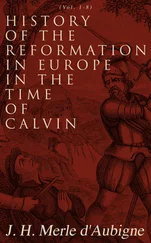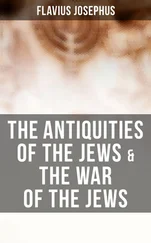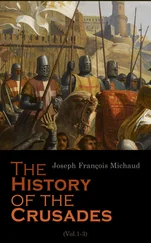Heinrich Graetz - History of the Jews, Vol. 3 (of 6)
Здесь есть возможность читать онлайн «Heinrich Graetz - History of the Jews, Vol. 3 (of 6)» — ознакомительный отрывок электронной книги совершенно бесплатно, а после прочтения отрывка купить полную версию. В некоторых случаях можно слушать аудио, скачать через торрент в формате fb2 и присутствует краткое содержание. Жанр: История, foreign_antique, foreign_prose, на английском языке. Описание произведения, (предисловие) а так же отзывы посетителей доступны на портале библиотеки ЛибКат.
- Название:History of the Jews, Vol. 3 (of 6)
- Автор:
- Жанр:
- Год:неизвестен
- ISBN:нет данных
- Рейтинг книги:3 / 5. Голосов: 1
-
Избранное:Добавить в избранное
- Отзывы:
-
Ваша оценка:
- 60
- 1
- 2
- 3
- 4
- 5
History of the Jews, Vol. 3 (of 6): краткое содержание, описание и аннотация
Предлагаем к чтению аннотацию, описание, краткое содержание или предисловие (зависит от того, что написал сам автор книги «History of the Jews, Vol. 3 (of 6)»). Если вы не нашли необходимую информацию о книге — напишите в комментариях, мы постараемся отыскать её.
History of the Jews, Vol. 3 (of 6) — читать онлайн ознакомительный отрывок
Ниже представлен текст книги, разбитый по страницам. Система сохранения места последней прочитанной страницы, позволяет с удобством читать онлайн бесплатно книгу «History of the Jews, Vol. 3 (of 6)», без необходимости каждый раз заново искать на чём Вы остановились. Поставьте закладку, и сможете в любой момент перейти на страницу, на которой закончили чтение.
Интервал:
Закладка:
Heinrich Graetz
History of the Jews, Vol. 3 (of 6)
CHAPTER I.
THE DECAY OF JUDÆA AND THE JEWS IN DISPERSION
The Zendik Religion – King Kobad and Mazdak the Reformer – Revolt of the Jews – Mar-Zutra – Revival of the Schools – The Saburaïm – The Talmud committed to writing – Tolerance of Chosru II – The Christianization of Judæa – The Jews under Byzantine Rule – Justinian – Persecution of the Samaritans – Benjamin of Tiberias – Attack on Tyre – The Emperor Heraclius.
Hardly had the Jews recovered from the long and horrible persecution to which they had been subjected by King Firuz, when they were overtaken by fresh storms, which subverted the work of three centuries. Firuz had been followed by his brother, who reigned a short time, and was succeeded by Kobad (Kovad, Cabades). The latter was a weak king, not without good qualities, but he allowed himself to become the tool of a fanatic, and was prevailed upon to institute religious persecutions. There arose under this monarch a man who desired to reform the religion of the Magi and make it the ruling faith. Mazdak – for that was the name of this reformer of Magianism – believed that he had discovered a means of promoting the promised victory of Light over Darkness, of Ahura-Mazda over Angromainyus. He considered greed of property and lust after women the causes of all evil among men, and he desired to remove these causes by introducing community of property and of women, even allowing promiscuous intercourse among those related by ties of consanguinity. In Mazdak's opinion it was on the foundation of communistic equality that the edifice of Zoroaster's doctrine could most safely be raised. As he led a virtuous and ascetic life, and was very earnest in his endeavors to reform, he soon succeeded in gaining numerous adherents (about the year 501), who availed themselves of these advantageous liberties, and called themselves Zendik, or true believers of the Zend. King Kobad himself became Mazdak's faithful disciple and supporter. He issued a decree commanding all the inhabitants of the Persian Empire to accept the doctrines of Mazdak, and to live in accordance therewith. The lower classes became the most zealous of Zendiks; they promptly appropriated the possessions of the rich and such of the women as pleased them. Thus there arose a confusion of the ideas of right and wrong, of virtue and vice, such as had never been known in the history of nations. Finally, the Persian nobles dethroned this communistic king, and threw him into prison; but when Kobad escaped from confinement and, by the aid of the Huns, was again placed in possession of his dominions, they were unable to prevent Mazdak's adherents from renewing their licentious conduct. Many children born during Kobad's reign were of doubtful paternity, and no one could be certain of the peaceful enjoyment of his property.
The Jews and Christians naturally did not escape the communistic plague, and although only the rich suffered from the legalized robbery of the Zendiks, the community of women struck a terrible blow at all classes. Chastity and holding sacred the marriage vows had, from the first, been characteristic virtues of the Jews, and by Talmudic law, they had become even more deeply rooted in their natures. They could not endure the thought of their wives and maidens exposed to violation, and the purity of their families, which they treasured as the apple of their eye, threatened with defilement. They appear therefore to have opposed an armed resistance to the licentious attacks of the Zendiks. An insurrection of the Jews, which broke out at this juncture, was in all probability organized for the purpose of resisting this intolerable communism. At the head of this insurrection stood Mar-Zutra II, the youthful Prince of the Captivity, who, to judge from the fact alone that legend has embellished his birth and deeds with wonderful details, must have been a remarkable personage.
Mar-Zutra, born in about 496, was the son of Huna, a learned Prince of the Captivity, who, after the death of the tyrant Firuz, was invested with the dignity of the Exilarchate (488–508). At the time of his father's death, Mar-Zutra was still a young boy. During the period of his minority, the office of Prince of the Captivity was held by Pachda, his sister's husband, who does not seem to have been inclined to yield this dignity to the lawful heir. Mar-Zutra's grandfather, Mar-Chanina, in company with his grandson, sought the court of the Persian king, and in 511, presumably by means of valuable presents, succeeded in effecting Pachda's deposition and Mar-Zutra's investiture. It was this young prince who now arose, sword in hand, to protect his brethren. The immediate cause of the insurrection is said to have been the murder of Mar-Isaac, the president of one of the academies. Mar-Zutra's forces consisted of four hundred Jewish warriors, with whose help he probably succeeded in expelling Mazdak's rapacious and lustful adherents from the territory of Jewish Babylonia, and in resisting this shameless violation of most sacred rights. He is further said to have accomplished such brilliant feats of arms that the troops which had been sent by the king to quell the insurrection were unable to withstand him. Mar-Zutra is even said to have won independence for his people, and to have laid the non-Jewish inhabitants of Babylonia under tribute. Machuza, near Ctesiphon, became the capital of a small Jewish state, with the Prince of the Captivity for its king.
The independence thus conquered by Mar-Zutra lasted nearly seven years; the Jewish army was finally overcome by the superior numbers of the Persian host, and the Prince of the Captivity was taken prisoner. He and his aged grandfather, Mar-Chanina, were executed, and their bodies nailed to the cross on the bridge of Machuza (about 520). The inhabitants of this town were stripped of their possessions, and led into captivity, and it is probable that this was not the full extent of the persecution. The members of the family of the Prince of the Captivity were compelled to flee. They escaped to Judæa, taking with them Mar-Zutra's posthumous heir, who also bore the name Mar-Zutra. He was educated in Judæa, and there became a distinguished scholar. On account of Kobad's persecution, the office of Prince of the Captivity in Babylonia remained in abeyance for some time. The Talmudical academies were closed, for the teachers of the Law were persecuted and compelled to hide. Two of the leading men, Ahunai and Giza, fled, and the latter settled on the river Zab. Other fugitives probably directed their steps towards Palestine or Arabia. Kobad's revenge for an insurrection provoked by fanaticism dealt a severe blow at the public life of the Babylonian Jews, which centered in the two academies, at Sora and Pumbeditha. However, the persecution does not seem to have extended over the whole of Persia, for Jewish soldiers served in the Persian army which fought against the Greek general Belisarius, and the Persian captain had so great a regard for them that he requested a truce in order that they might peacefully observe the feast of Passover.
After Kobad's death, the persecution of the Babylonian Jews ceased. His successor, Chosroes Nushirvan, was not, indeed, well-disposed towards them, and imposed upon them and the Christians a poll-tax from which only children and old men were exempt; yet this tax was not an indication of intolerance or hate, but simply a means of filling the imperial treasury.
As soon as peace was restored the representatives of the Babylonian Jews hastened to re-establish their institutions, to re-open the academies, and, as it were, to re-unite the severed links in the chain of tradition. The fugitive Giza, who had remained in hiding by the river Zab, was called to preside over the academy at Sora; the sister academy at Pumbeditha chose Semuna as its head. A third name of this period has been transmitted to posterity, that of Rabaï of Rob (near Nahardea), whose position and office are, however, not clearly known. These men, with their associates and disciples, devoted their whole activity to the Talmud. It was the sole object of the attention of all thoughtful and pious men of that period; it satisfied religious zeal, promoted tranquillity of mind, and was also the means of acquiring fame, and thus furthering both spiritual and temporal aims. The persecution of the Law endeared and sanctified it, and the Talmud was the sacred banner around which the entire nation rallied.
Читать дальшеИнтервал:
Закладка:
Похожие книги на «History of the Jews, Vol. 3 (of 6)»
Представляем Вашему вниманию похожие книги на «History of the Jews, Vol. 3 (of 6)» списком для выбора. Мы отобрали схожую по названию и смыслу литературу в надежде предоставить читателям больше вариантов отыскать новые, интересные, ещё непрочитанные произведения.
Обсуждение, отзывы о книге «History of the Jews, Vol. 3 (of 6)» и просто собственные мнения читателей. Оставьте ваши комментарии, напишите, что Вы думаете о произведении, его смысле или главных героях. Укажите что конкретно понравилось, а что нет, и почему Вы так считаете.












